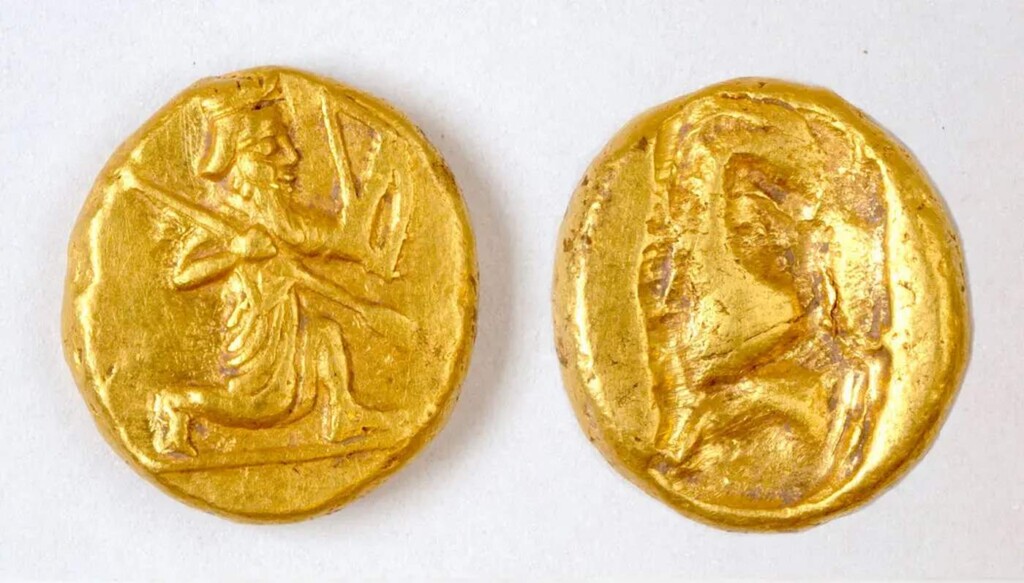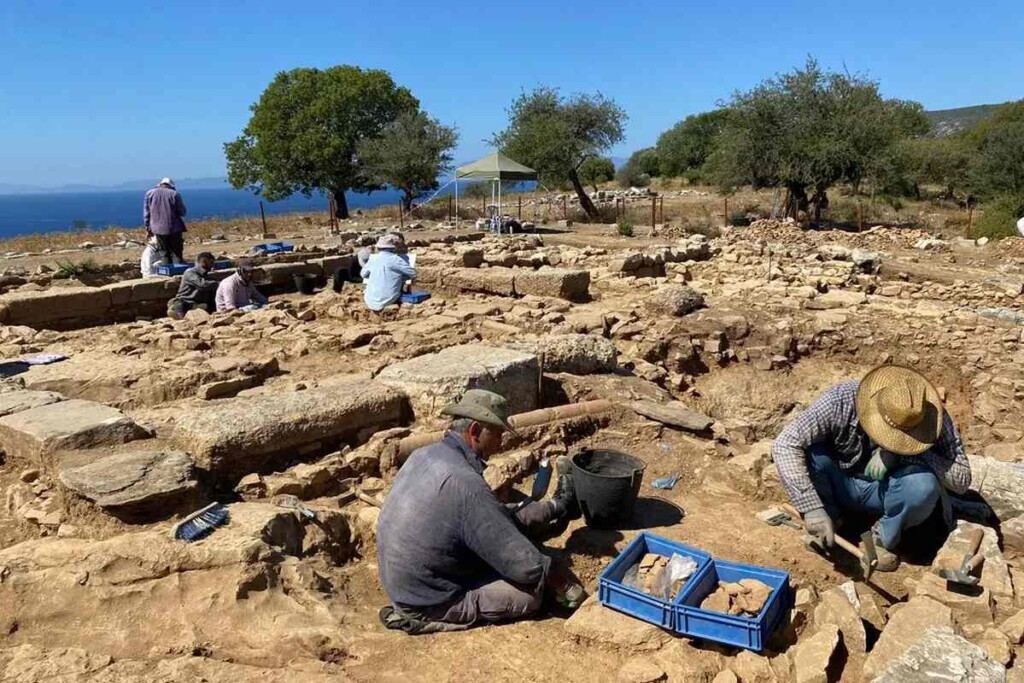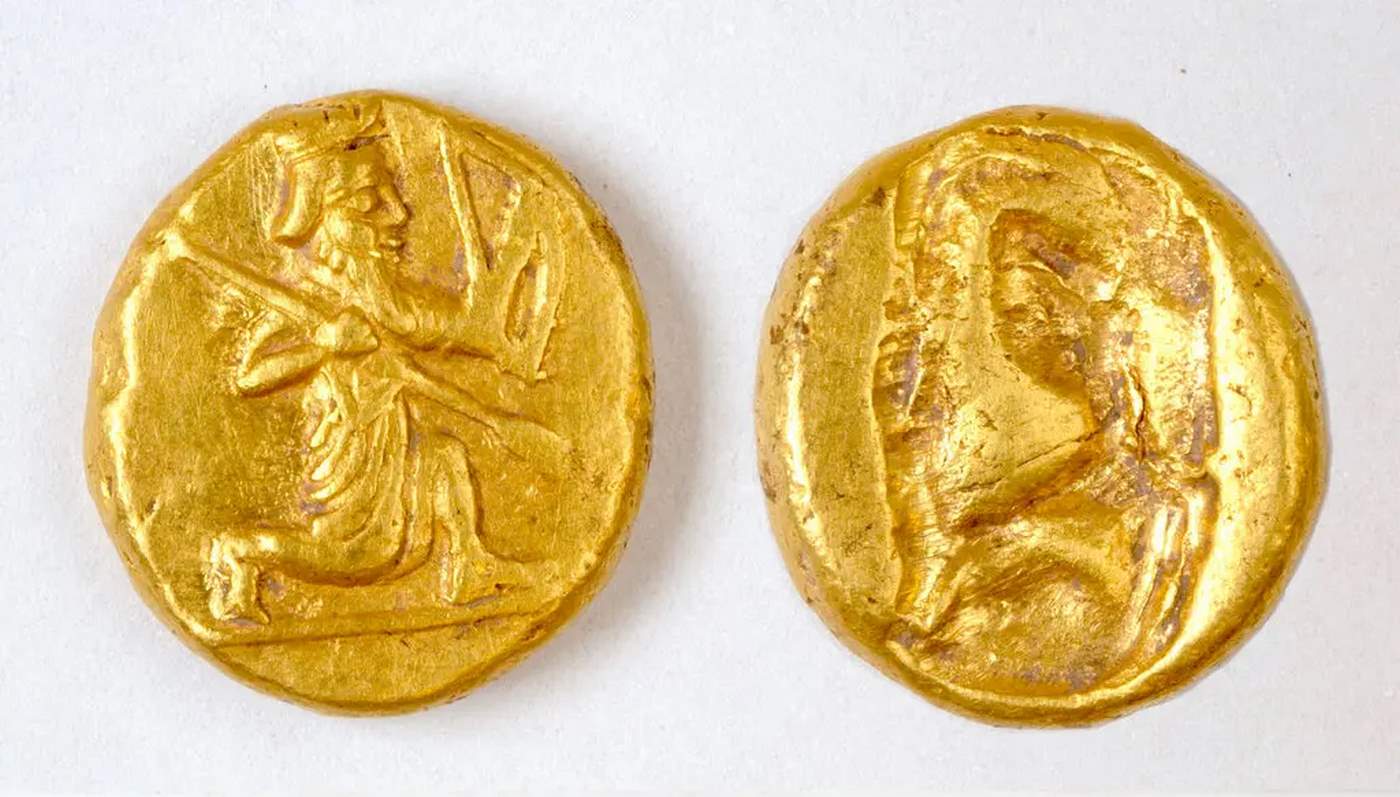
It’s one of the best things an archaeologist can hope to find: a hoard of gold coins. One was dug up recently in a terracotta pot, meaning that, if one sustains the pun, they found a pot of gold.
They didn’t find it at the end of a rainbow, however, but it was at the ‘end’ of something—Asia—as the Ancient Greeks would have considered it.
Excavations among the ruins of Notion, an ancient city-state in modern-day Turkey, turned up the foundations of a house dating to the Achaemenid Persian Empire buried under another house built from the Hellenistic Period, or about 180 years later.
“The coins were buried in a corner of the older building,” Dr. Christopher Ratté, lead archaeologist on the project, told the New York Times. “We weren’t actually looking for a pot of gold.”
The coins are known as darics, which stems from the name of the Emperor Darius I, or from ‘dari-‘ the root word for gold in the Persian language. Dating to the 5th century BCE, it was a time of great upheaval as Greek city-states fought against each other, against Persia, and sometimes on behalf of Persia against other Greeks, when mercenary soldiers made up key components of many major armies in Asia Minor.
The running hypothesis as to the coins’ provenance is that they were buried with the full intention of recovering them later. They probably represented savings, as each daric would be around one month’s pay. However, the fact that they were never dug up from their little hole in the corner of the house suggests the worst.
Greek soldiers shunned archery, so their share of the fighting was done at the tip of a spear. Furthermore, mercenary troops were even more likely to die than state troops, because the more of them that died during battle, the fewer people a ruler had to pay in the aftermath. As a result, they were often placed in the most precarious or dangerous positions on the battlefield.
“This is a find of the highest importance,” said Andrew Meadows, an archaeologist at the University of Oxford who was not involved in the project. “The archaeological context for the hoard will help us fine-tune the chronology of Achaemenid gold coinage.”

Ancient timekeepers
Coins, or more specifically the designs stamped into them, are one of the great chronometers of ages past, and are routinely used to place the birth and decline of empires and states that used their own calendars onto our own measurements of time.
They also demonstrate what the most important elements of symbolism for the rulers of a state were. In his book Empires of the Steppes, author and numismatist Kenneth Harl routinely uses the images on minted coins as a way of judging whether a particular conquering band of Central Asian nomads sought to integrate themselves into the cultures they conquered or remain true to their nomadic heritage.
HIDING UNDERNEATH OUR FEET:
- 4,000-year-old Tablet Describes ‘Lunchables’ of Cheese and Meat Carried in a Box
- Archaeologists Find Remarkable Marble Statue of Greek God Hermes in Ancient Sewer
- Heaps of Gold Uncovered in 1,200-year-old Pre-Colombian Tomb in Panama
- 1,000 year old Viking Sword Fished out of an Oxfordshire River with a Magnet
- Tube of Red Lipstick 4,000 Years Old Unearthed in Iran Bears ‘Striking Resemblance’ to Modern Ingredients
Is the king depicted with a sword or a bow? Is he wearing a crown or a felt cap? Are they stamped with agricultural imagery or hunting scenes? The answers can offer critical clues to historians as to how a civilization’s rulers saw themselves and wanted themselves to be seen by others.
In the case of the gold darics, they depict Darius I, the third emperor of the Persians (referred to by his subjects as the ‘shopkeeper’) kneeling and holding a bow and a spear.
Darics are very rare among ancient coins owning to Alexander the Great’s orders to melt them all down and re-stamp them into ones bearing his image after he conquered the Achaemenid Empire.
SHARE This Great Discovery And Important History With Your Friends…




















